
Michael Kenneth Mann is an American film director, screenwriter and producer, best known for his stylized crime dramas. He has received a BAFTA Award and two Primetime Emmy Awards as well as nominations for four Academy Awards and two Golden Globe Awards. His most acclaimed works include the films Thief (1981), Manhunter (1986), The Last of the Mohicans (1992), Heat (1995), The Insider (1999), Ali (2001), Collateral (2004), Public Enemies (2009), and Ferrari (2023). He was executive producer on the popular TV series Miami Vice (1984–90), which he adapted into a 2006 feature film.

Samuel Atkinson Waterston is an American actor. Waterston is known for his work in theater, television, and film. He has received numerous accolades including a Primetime Emmy Award, Golden Globe Award, and Screen Actors Guild Award as well as nominations for an Academy Award, a Tony Award, and a BAFTA Award. His acting career has spanned over five decades acting on stage and screen. Waterston received a star on the Hollywood Walk of Fame in 2010 and was inducted into the American Theater Hall of Fame in 2012.

Law & Order is an American police procedural and legal drama television series created by Dick Wolf and produced by Wolf Entertainment and Universal Television, launching the Law & Order franchise.
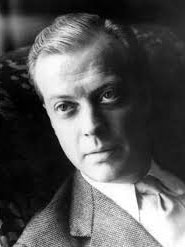
Eric Clifford Ambler OBE was an English author of thrillers, in particular spy novels, who introduced a new realism to the genre. Also working as a screenwriter, Ambler used the pseudonym Eliot Reed for books written with Charles Rodda.

Joseph Wiseman was a Canadian-American theatre, film, and television actor. He starred as the villain Julius No in the first James Bond film, Dr. No, in 1962. He was also known for his role as crime boss Manny Weisbord on the television series Crime Story and his lengthy career on Broadway, where he was once called "the spookiest actor in the American theatre".
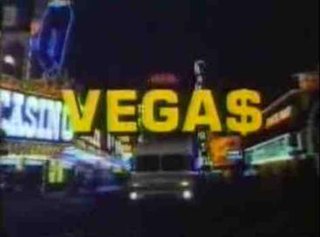
Vegas is an American crime drama television series starring Robert Urich that aired on ABC from September 20, 1978, to June 3, 1981, with the pilot episode airing April 25, 1978. Vegas was produced by Aaron Spelling and was created by Michael Mann. The series was filmed in its entirety on location in Las Vegas, Nevada.

Yvette Carmen Mimieux was an American film and television actress who was a major star of the 1960s and 1970s. Her breakout role was in The Time Machine (1960). She was nominated for three Golden Globe Awards during her acting career.

Dana Scott James "Jim" Hutton was an American actor in film and television best remembered for his role as Ellery Queen in the 1970s TV series of the same name, and his screen partnership with Paula Prentiss in four films, starting with Where the Boys Are. He is the father of actor Timothy Hutton.

Journey into Fear is a 1940 spy thriller novel by Eric Ambler. Film adaptations were released in 1943 and 1975.

Skyjacked is a 1972 American disaster film starring Charlton Heston and Yvette Mimieux. Directed by John Guillermin, the film is based on the David Harper novel Hijacked. James Brolin led an ensemble cast primarily playing the roles of passengers and crew aboard an airliner.

Death Takes a Holiday is a 1934 American pre-Code romantic drama starring Fredric March, Evelyn Venable and Guy Standing. It is based on the 1924 Italian play La morte in vacanza by Alberto Casella (1891–1957), as adapted in English for Broadway in 1929 by Walter Ferris.
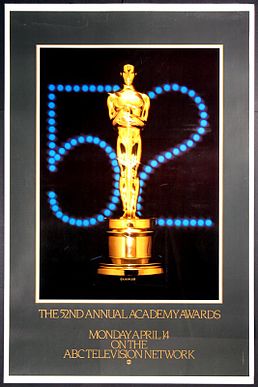
The 52nd Academy Awards ceremony, organized by the Academy of Motion Picture Arts and Sciences (AMPAS), honored films released in 1979 and took place on April 14, 1980, at the Dorothy Chandler Pavilion in Los Angeles, beginning at 6:00 p.m. PST / 9:00 p.m. EST. During the ceremony, AMPAS presented Academy Awards in 22 categories. The ceremony, televised in the United States by ABC, was produced by Howard W. Koch and directed by Marty Pasetta. Comedian and talk show host Johnny Carson hosted the show for the second consecutive year. Three days earlier, in a ceremony held at The Beverly Hilton in Beverly Hills, California, on April 11, the Academy Scientific and Technical Awards were presented by hosts Cloris Leachman and William Shatner.

Shelley Hennig is an American actress, model and beauty queen. She is the recipient of several accolades, including a Teen Choice Award and two Daytime Emmy Award nominations.

William Frank Jones, known professionally as Christopher Jones, was an American actor. He was best known for his starring roles in the films Wild in the Streets (1968) and Ryan's Daughter (1970), and for playing the title role in the 1960s television series The Legend of Jesse James.

Fiddler on the Roof is a 1971 American period musical film produced and directed by Norman Jewison from a screenplay written by Joseph Stein, based on the stage musical by Stein, Jerry Bock, and Sheldon Harnick, which premiered on Broadway in 1964. Set in early 20th-century Imperial Russia, the film centers on Tevye, a poor Jewish milkman who is faced with the challenge of marrying off his five daughters amidst the growing tension in his shtetl. The cast also features Norma Crane, Leonard Frey, Molly Picon, Paul Mann, Rosalind Harris, Michèle Marsh, Neva Small and Paul Michael Glaser. The musical score, composed by Bock with lyrics by Harnick, was adapted and conducted by John Williams.

P. J. Ochlan is an American actor and voice actor best known for his roles as Damon Wells in the feature film Little Man Tate (1991) and Lester Shane in the television show Police Academy: The Series. He has narrated hundreds of audiobooks and has won the Audie Award and several AudioFile Earphones Awards. Ochlan appeared on Broadway in Abe Lincoln in Illinois and in the New York Shakespeare Festival production of Love's Labour's Lost for Joseph Papp.
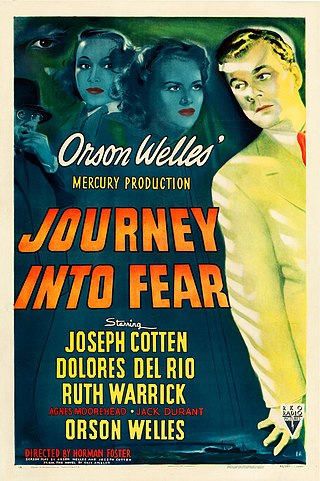
Journey into Fear is a 1943 American spy film noir directed by Norman Foster, based on the 1940 novel by Eric Ambler. The film broadly follows the plot of the book, but the protagonist was changed to an American engineer, and the destination of his journey changed from France to the Soviet Union—reflecting the changes in the war situation since the original Ambler book was written. The RKO Pictures release stars Joseph Cotten, who also wrote the screenplay with Orson Welles. The Mercury Production was also produced by Welles, again uncredited.

Dr. Kildare is an NBC medical drama television series which originally ran from September 28, 1961, until August 30, 1966, for a total of 191 episodes over five seasons. Produced by MGM Television, it was based on fictional doctor characters originally created by author Max Brand in the 1930s and previously used by MGM in a popular film series and radio drama. The TV series quickly achieved success and made a star of Richard Chamberlain, who played the title role. Dr. Kildare inspired or influenced many later TV shows dealing with the medical field. Dr. Kildare aired on NBC affiliate stations on Thursday nights at 8:30–9:30 p.m. until September 1965, when the timeslot was changed to Monday and Tuesday nights at 8:30–9:00 p.m. through the end of the show's run.
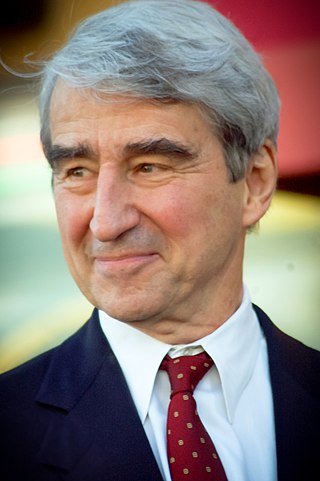
Sam Waterston is an American actor and producer best known for his portrayal of district attorney Jack McCoy in the long-running police procedural and legal drama television show Law & Order.
Blueprint Pictures Limited is an indie film and television production company founded in 2005 by producers Graham Broadbent and Peter Czernin. Sony Pictures Television has owned a small stake in Blueprint Television since 2016.



















